Abstract
Pigeons learned to discriminate between a positive stimulus (white key) and a negative stimulus (red or green key, depending on the subject) via Terrace's fading procedure. Generalization tests, conducted with intermittent reinforcement for key pecking at various wavelengths, yielded minima at the value of the negative stimulus in most “errorless” birds. Terrace's contrary finding of flat gradients in errorless subjects probably resulted from a floor-effect (i.e., virtually zero responding) produced by his extinction-test procedure. The present and other findings do not support Terrace's conclusions that the negative stimulus of an errorless discrimination is behaviorally neutral; inhibition apparently develops to the nonreinforced stimulus even during errorless discrimination learning. A negative correlation between stimulus and reinforcer seems the crucial factor in producing an inhibitory stimulus.
Full text
PDF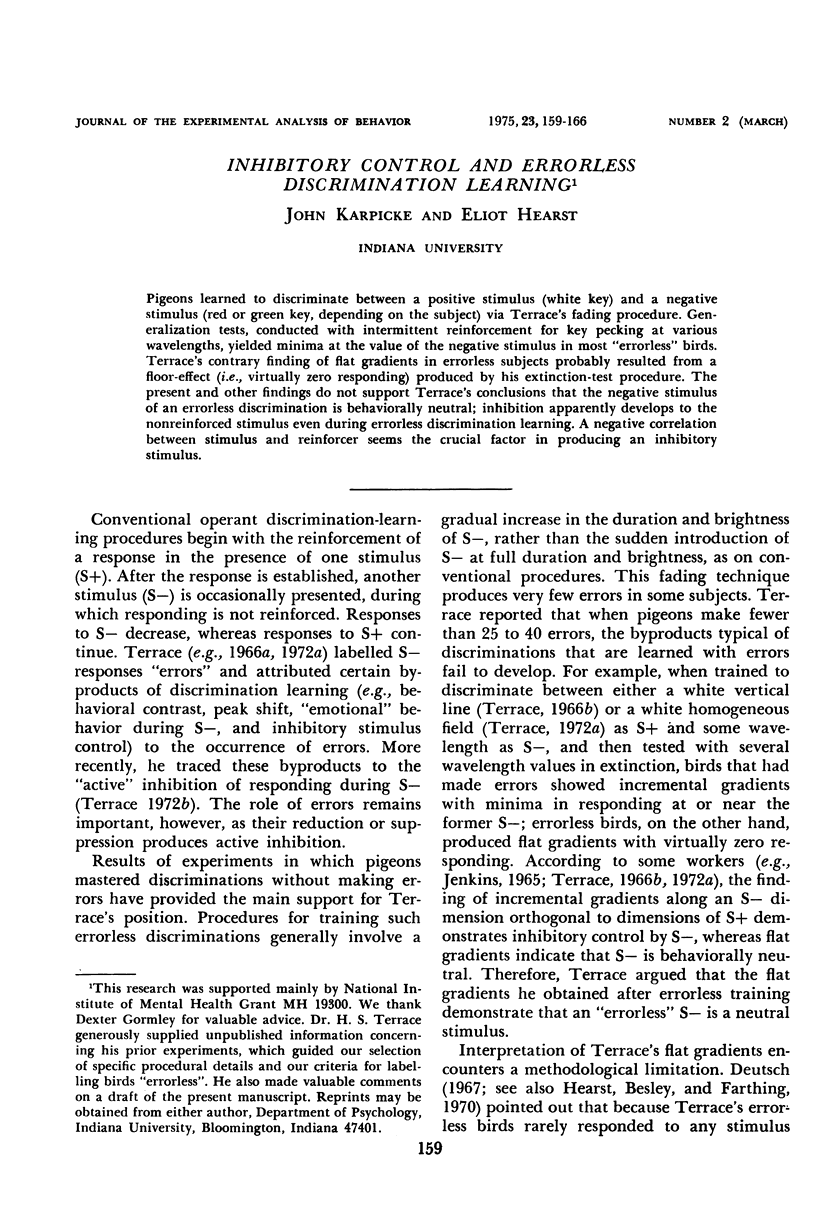
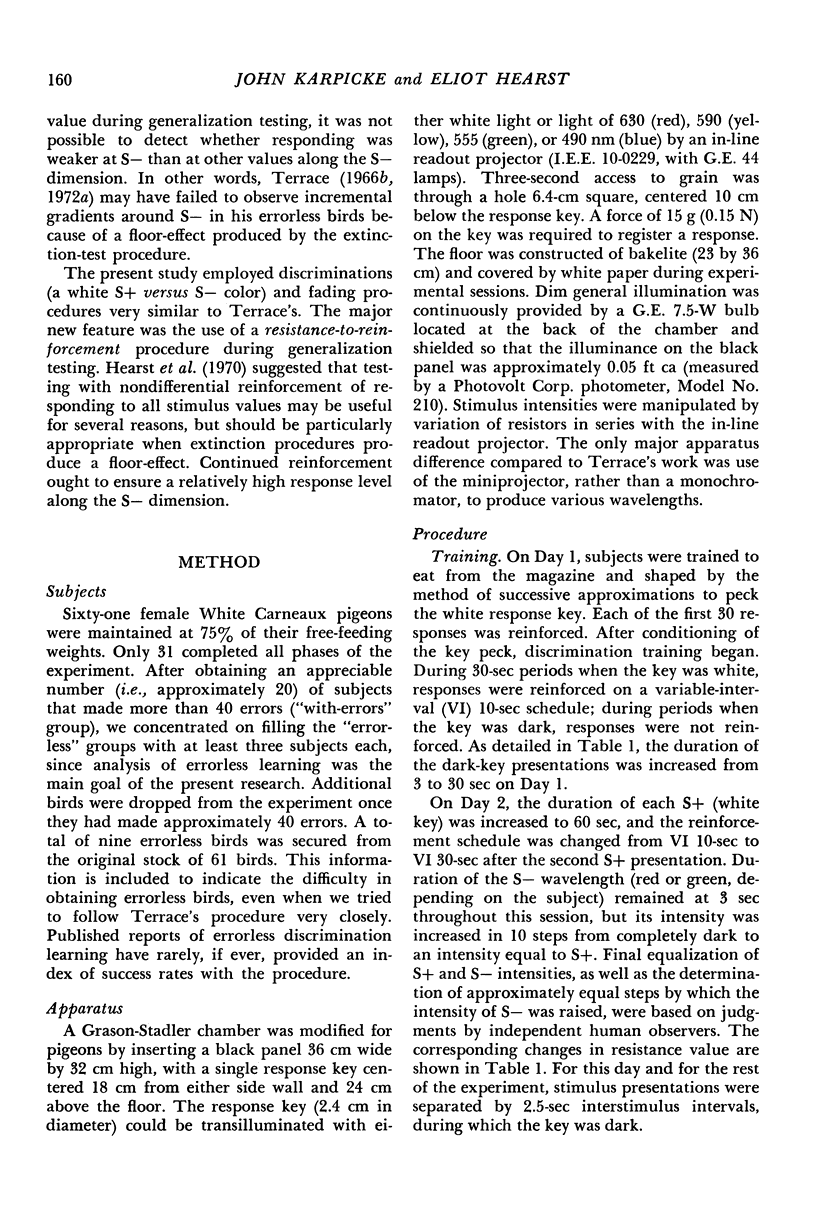
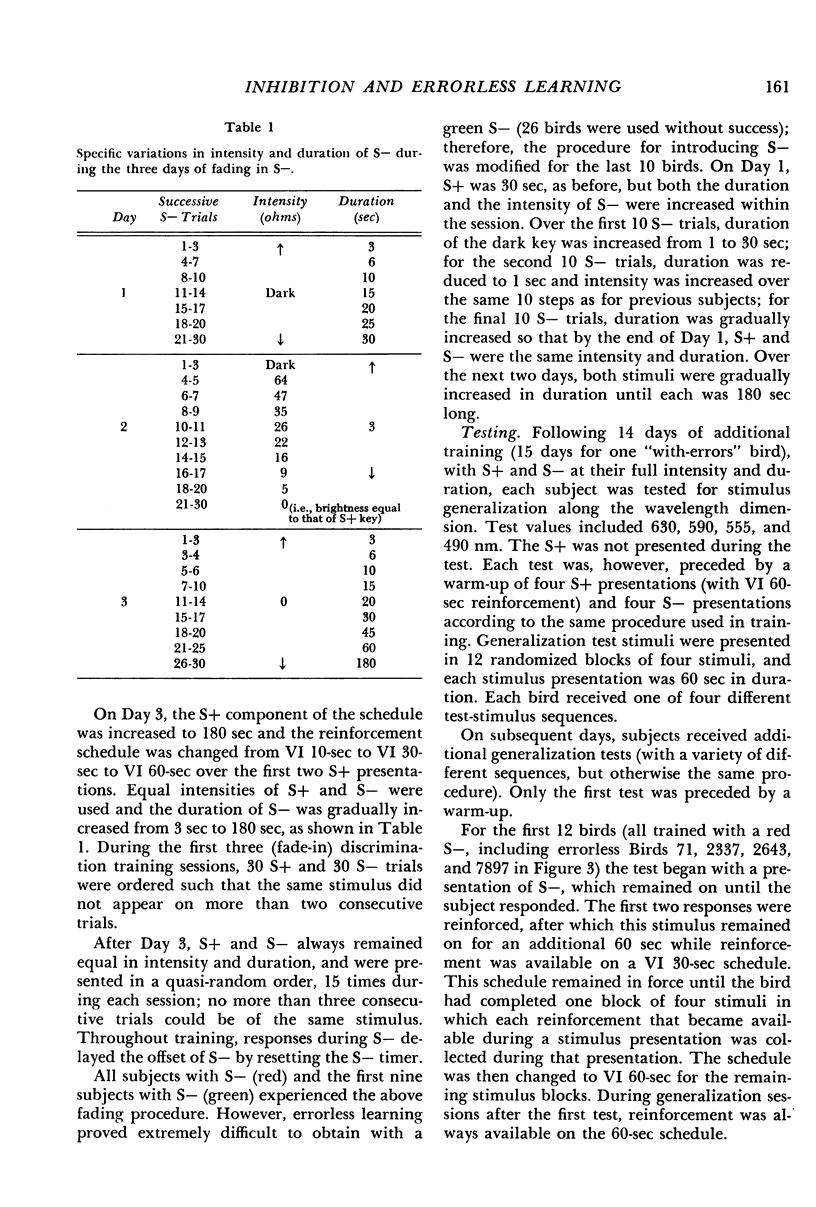
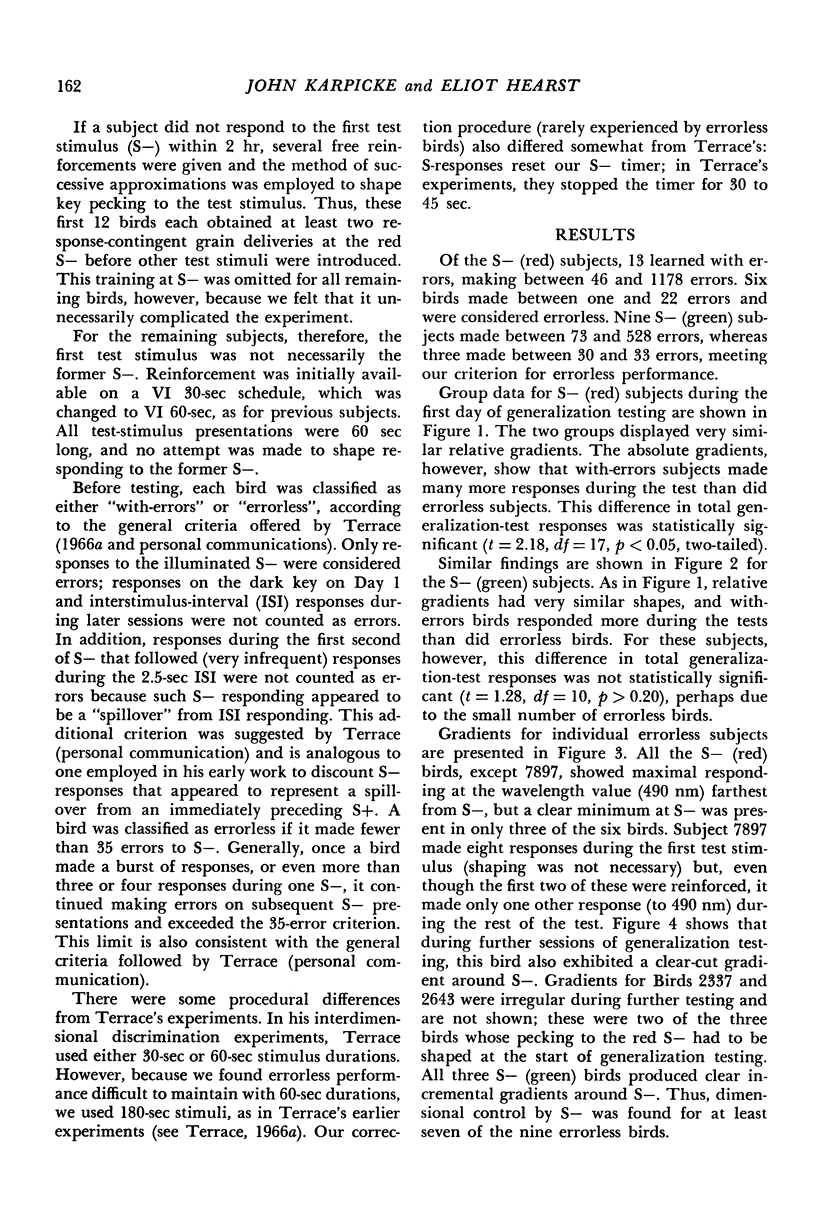
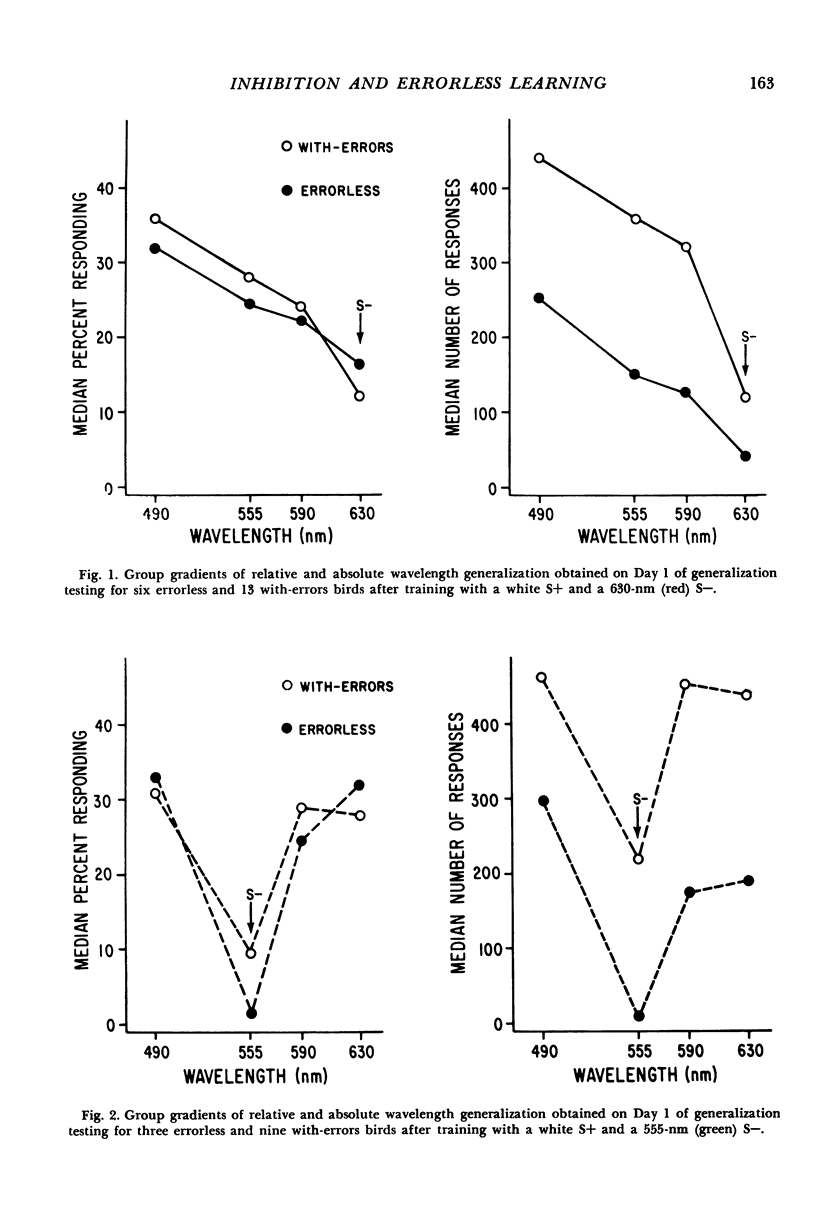
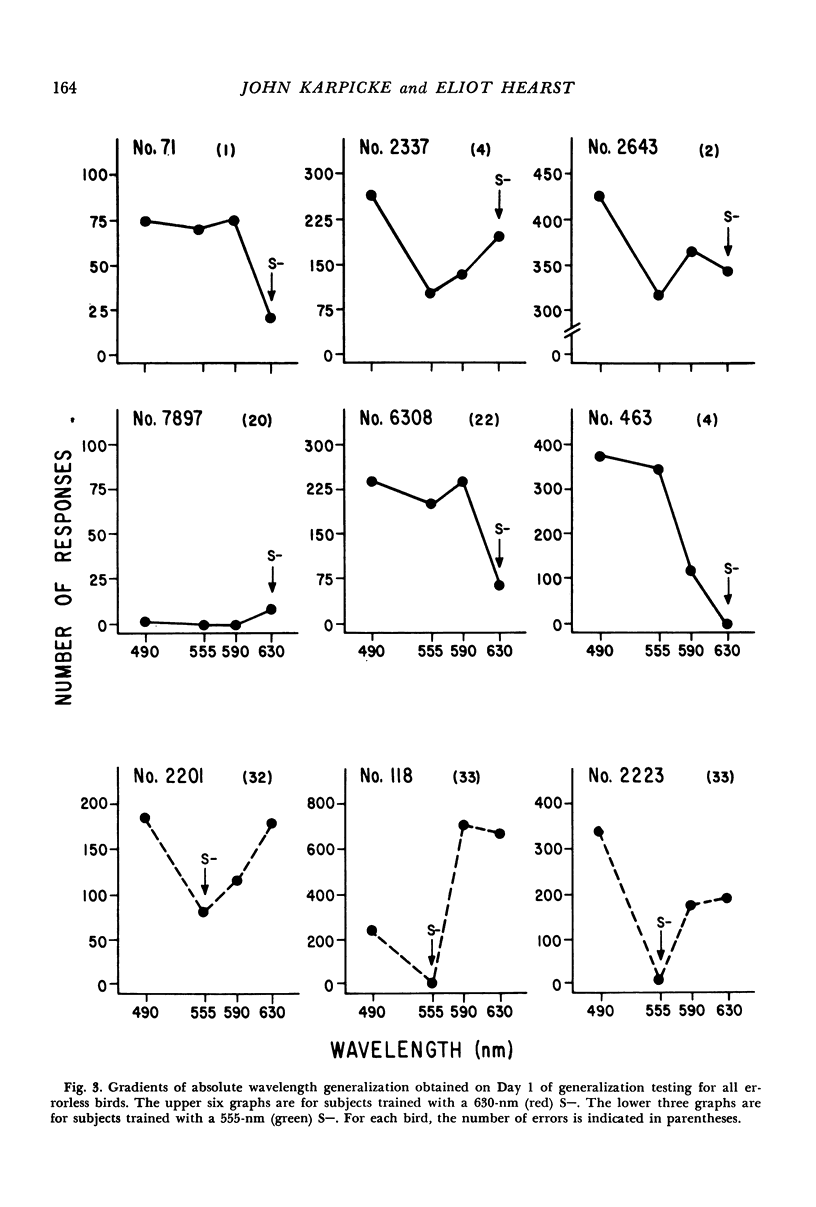
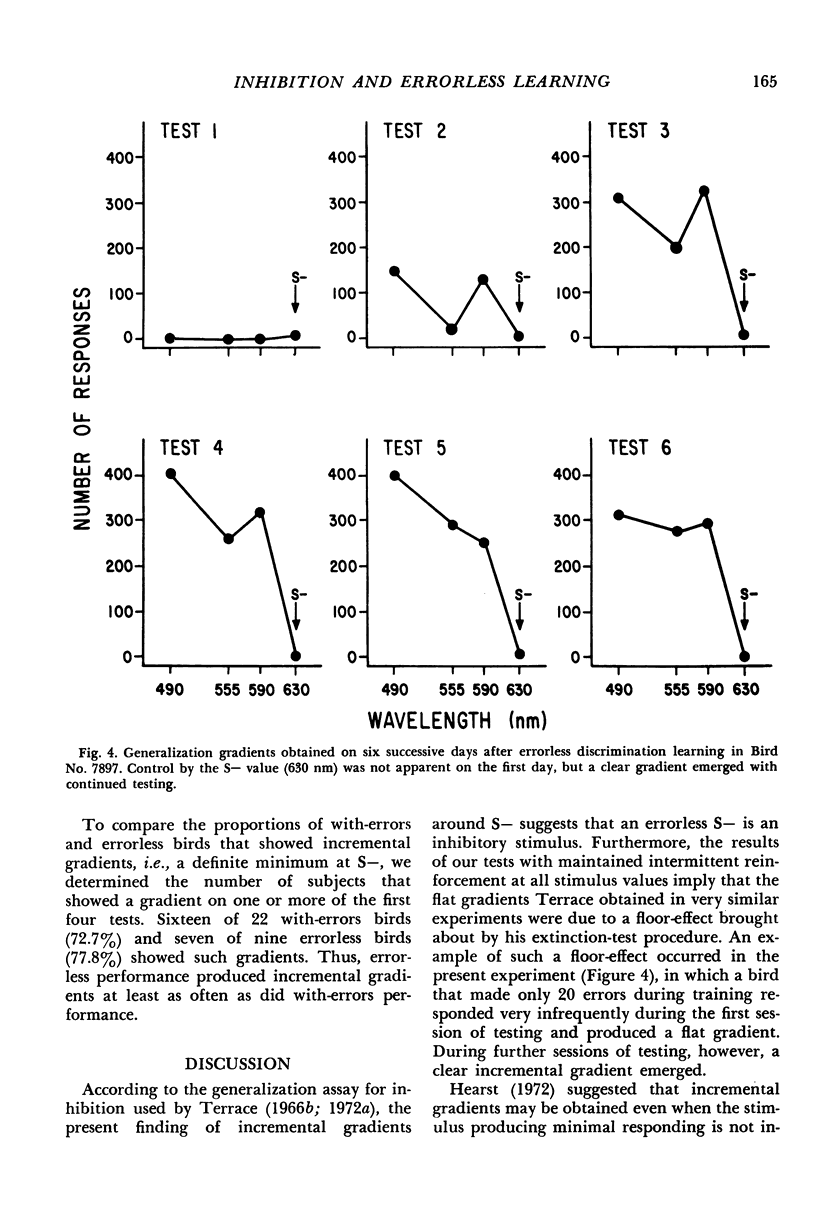
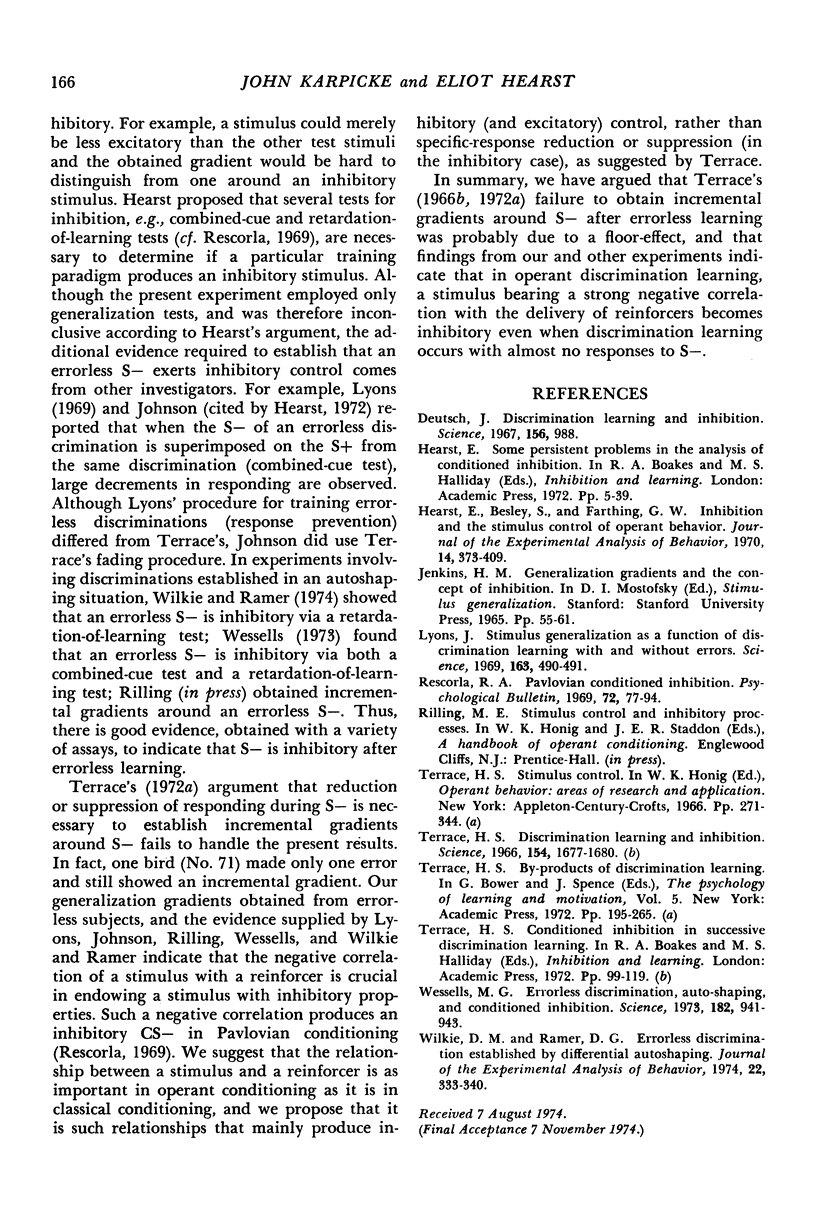
Selected References
These references are in PubMed. This may not be the complete list of references from this article.
- Deutsch J. A., Terrace H. S. Discrimination learning and inhibition. Science. 1967 May 19;156(3777):988–989. doi: 10.1126/science.156.3777.988. [DOI] [PubMed] [Google Scholar]
- Hearst E., Besley S., Farthing G. W. Inhibition and the stimulus control of operant behavior. J Exp Anal Behav. 1970 Nov;14(3 Pt 2 Suppl):373–409. doi: 10.1901/jeab.1970.14-s373. [DOI] [PMC free article] [PubMed] [Google Scholar]
- Lyons J. Stimulus generalization as a function of discrimination learning with and without errors. Science. 1969 Jan 31;163(3866):490–491. doi: 10.1126/science.163.3866.490. [DOI] [PubMed] [Google Scholar]
- Terrace H. S. Discrimination learning and inhibition. Science. 1966 Dec 30;154(3757):1677–1680. doi: 10.1126/science.154.3757.1677. [DOI] [PubMed] [Google Scholar]
- Wessells M. G. Errorless discrimination, autoshaping, and conditioned inhibition. Science. 1973 Nov 30;182(4115):941–943. doi: 10.1126/science.182.4115.941. [DOI] [PubMed] [Google Scholar]
- Wilkie D. M., Ramer D. G. Errorless discrimination established by differential autoshaping. J Exp Anal Behav. 1974 Sep;22(2):333–340. doi: 10.1901/jeab.1974.22-333. [DOI] [PMC free article] [PubMed] [Google Scholar]


